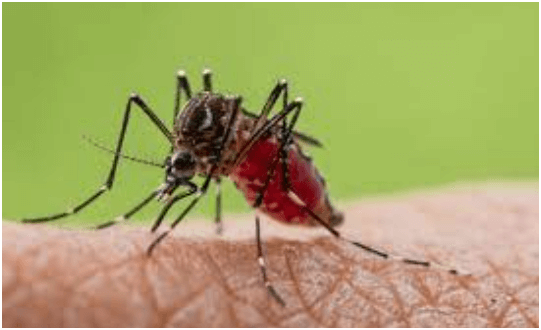Oropouche fever is a viral disease caused by the Oropouche virus (OROV), which belongs to the Orthobunyavirus genus in the Peribunyaviridae family.
It is primarily transmitted to humans through the bites of infected midges or biting midges (Culicoides species), which are small, blood-feeding insects similar to mosquitoes.
The disease is named after the Oropouche River in Trinidad and Tobago, where the virus was first isolated in 1955 during an outbreak. Since then, Oropouche fever has been reported in various countries in Central and South America, including Brazil, Panama, Peru, and others.
Symptoms:
- Fever: Oropouche fever typically begins with a sudden onset of fever, often accompanied by chills. The fever can be moderate to high-grade.
- Headache: Headaches are common in Oropouche fever and may be severe in some cases.
- Joint and Muscle Pain: Patients may experience joint pain (arthralgia) and muscle pain (myalgia), which can be generalized or localized.
- Fatigue: There is often a notable feeling of fatigue and weakness, which can persist for several days.
- Rash: Some individuals may develop a rash, although it is less common compared to other symptoms.
- Other Symptoms: Nausea, vomiting, and abdominal pain have also been reported in some cases, although they are less frequent.
The incubation period for Oropouche fever is typically short, ranging from 4 to 8 days after being bitten by an infected midge. Most cases of Oropouche fever are mild, and patients tend to recover completely within a few days to a week. However, in some instances, especially in older adults or individuals with underlying health conditions, the symptoms can be more severe and may require medical attention.
Diagnosis of Oropouche fever is primarily based on clinical symptoms and confirmed through laboratory tests that detect the presence of the Oropouche virus in blood or other bodily fluids. Treatment is usually supportive and includes rest, hydration, and medication to alleviate fever and pain. There is currently no specific antiviral treatment or vaccine available for Oropouche fever, so prevention focuses on avoiding mosquito bites, particularly in areas where the virus is endemic or during outbreaks.
The geographic distribution of Oropouche fever includes tropical and subtropical regions of the Americas where the Culicoides species of midges are prevalent. Outbreaks tend to occur more frequently during the rainy season when vector populations increase, facilitating viral transmission among both wildlife and humans.
While Oropouche fever is generally considered a self-limiting illness with mild to moderate symptoms, severe cases requiring hospitalization have been documented. Complications are rare but can include neurological manifestations such as meningitis or encephalitis in severe cases. These complications underscore the importance of early recognition and management of symptoms, especially in vulnerable populations.
Public health measures for controlling Oropuche fever outbreaks typically involve vector control strategies, such as insecticide spraying to reduce midge populations and community awareness campaigns to promote personal protective measures like using insect repellents and wearing long-sleeved clothing. Surveillance systems are also crucial for early detection of outbreaks and monitoring the spread of the virus within affected regions.
Research efforts continue to focus on understanding the epidemiology of Oropoche fever, developing diagnostic tools, and exploring potential vaccine candidates. Given its potential to cause significant morbidity during outbreaks, ongoing vigilance and collaboration between public health agencies, researchers, and healthcare providers are essential for mitigating the impact of this mosquito-borne disease.
In conclusion, Oropouche fever remains a significant public health concern in endemic regions of the Americas, characterized by its mosquito-borne transmission and flu-like symptoms. While most cases resolve without complications, severe manifestations can occur, highlighting the need for continued research and preparedness to effectively manage outbreaks and minimize the disease’s burden on affected populations.
Stay informed with the latest updates – click here .

